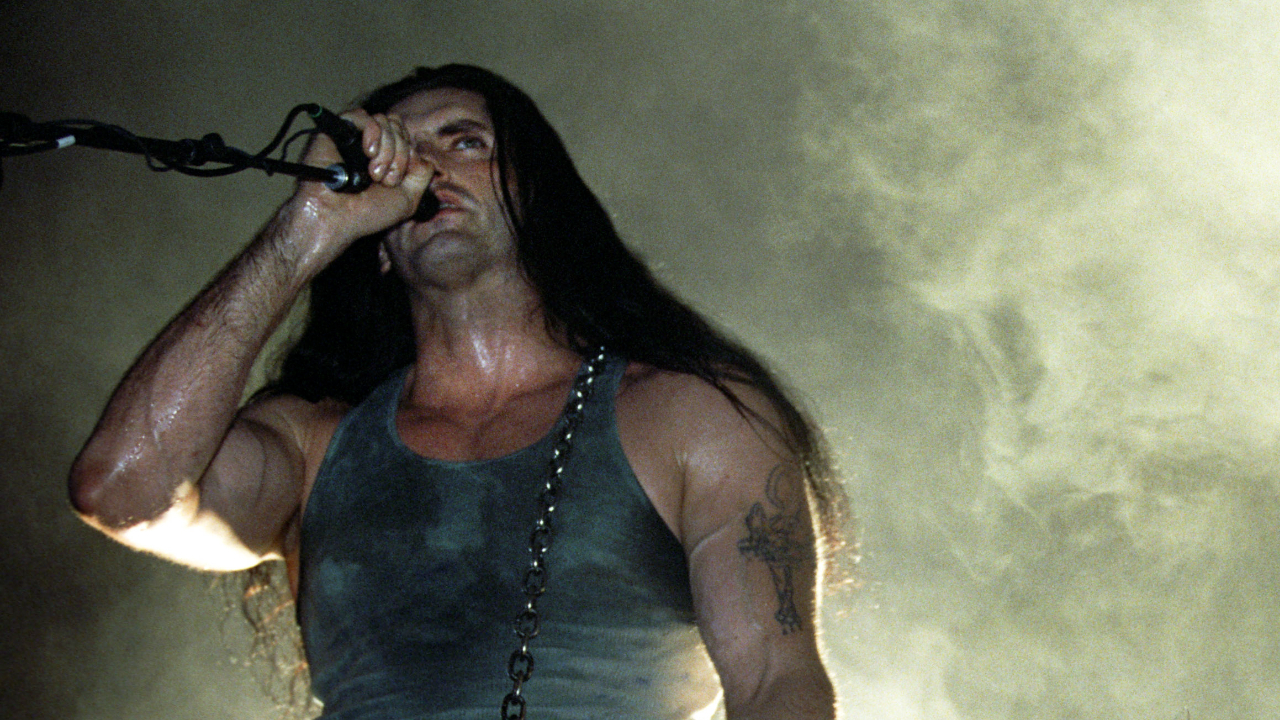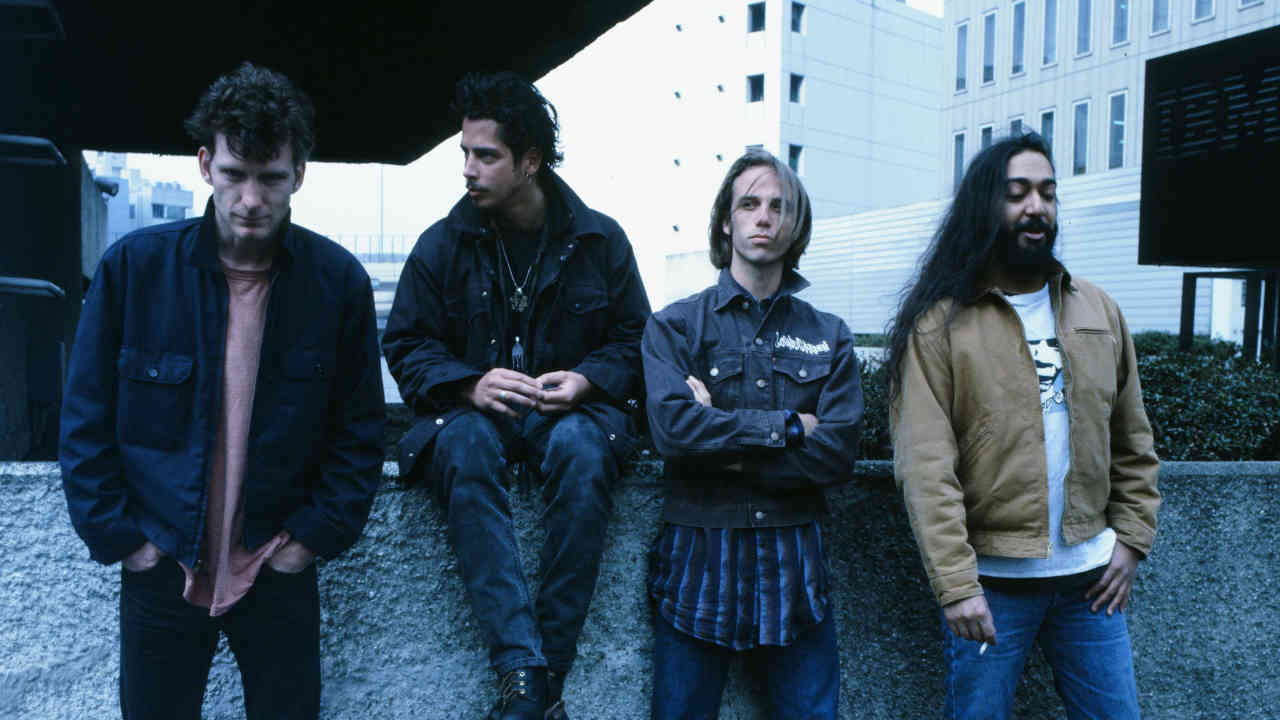"Everything blew up. I remember there was a store in East Village that started selling ruffled shirts and velvet jackets." Vampires, Jesus and goth going mainstream: the story of Type O Negative's Bloody Kisses
How Type O Negative brought gothic metal to the masses with an iron-clad classic album

Type O Negative were one of the most unlikely success stories in a decade of unlikely success stories. Fronted by the towering Peter Steele – a 6’8” giant with a fathomlessly deep voice and an obsidian-black sense of humour – the Brooklyn four-piece merged Black Sabbath’s unholy grind with The Sisters Of Mercy’s gothic grandiosity. Their magnum opus was 1993’s Bloody Kisses, a grimoire of romance, fury, irony and sadness that sold a million copies and unexpectedly thrust goth metal into the mainstream.
No one saw it coming. A few years earlier, Steele had been the bassist/vocalist of Carnivore, a band whose primitive noise, penchant for barbarian-style stage costumes and deliberately provocative take on social issues (sample title: Race War) baffled metal and hardcore audiences alike.
“Peter enjoyed fucking with people,” says original Type O Negative drummer Sal Abruscato. “People though he was serious when he was joking and joking when he was serious.”
After Carnivore split in 1988, Peter decided to put together a new band that would combine that band’s gut-level punch with an unexpected layer of electronics courtesy of an old friend, keyboard player Josh Silver. Cycling through the names Subzero, Zero Tolerance and Repulsion, they finally settled on Type O Negative – a phrase that reflected his knowingly bleak outlook.
The band’s first two albums, 1991’s Slow, Deep And Hard and 1992’s The Origin Of The Feces (a wise-ass faux-live recreation of the debut), kept one foot in the hardcore scene but punctuated it all with crepuscular atmospherics.
“Peter loved the goth girls,” says Sal. “We used to go to the bars where they all hung out to pick them up. But he was really into that sound – The Sisters Of Mercy, [New York industrial pioneers] Swans, [British shoegaze band] My Bloody Valentine. That whole scene was attractive to him, so he made it his own.”
By the time the band began work on Bloody Kisses, the goth elements in Type O’s music had been dragged front and centre. And that wasn’t the only change.
Sign up below to get the latest from Metal Hammer, plus exclusive special offers, direct to your inbox!
“Peter decided that melody was really where it’s at,” says Type O guitarist Kenny Hickey, “which was a hard thing to do. He went from screaming his head off and writing these furious, angry lyrics to actually trying sing for the first time in his career.”
The album’s first two singles repositioned Type O at the forefront of a non-existent goth metal scene. Black No.1 (Little Miss Scare-All) was a sarcastic, multi-part 11-minute ode to a girlfriend who had wronged the singer, that came with Addams Family-style finger clicks. It was followed by Christian Woman, eight minutes of quasi-religious erotica that found Steele intoning the line ‘Jesus Christ looks like me’ in his sonorous voice. Amazingly, an edited version of the latter became a US radio hit, helping propel Bloody Kisses to Gold and then Platinum status in the US. That non-existent goth metal scene had suddenly been willed into life.
“The whole vampire allure connected with people,” says Sal. “It was around the time of that movie, Interview With The Vampire [based on the Anne Rice novel], and everything blew up after that. I remember there was a store in East Village that started selling all kinds of ruffled shirts and velvet jackets and shit. And the band soon started attracting a lot of female fans because of it.”
The gigs started getting bigger – and weirder. At one point, the band were booked to play a club in New York that turned out to be a sex dungeon. “It was this underground BDSM place with all this torture equipment,” says Sal. “There were people dressed up and walking around on leashes. We were going, ‘What the hell are we doing here?’ We were just four guys from Brooklyn, we weren’t living that lifestyle.”
Type O’s music wasn’t just a racket from the crypt designed for goths and fetishists. Two songs on Bloody Kisses, the pounding Kill All The White People and We Hate Everyone, drew a line with the band’s hardcore-metal past. The latter addressed accusations of racism that had plagued Type O in their early days, a hangover from Peter’s time in Carnivore. “In Europe, we got accused of being Nazis at one point,” says Kenny. “I mean, Josh Silver is Jewish. Come on!”
Type O’s sense of humour might not have clicked with everyone, but it was still a major part of the band’s DNA. It was there in the title Black No.1 – their epic paean to doomed gothic love was named after a shade of over-the-counter hair dye. It was there, too, in their self-coined nickname – the Drab Four, a reference to Peter Steele’s beloved Beatles.
But just as often, the irony and sarcasm masked a troubled soul. The band’s funereal cover of Seals & Crofts’ soft-rock chestnut Summer Breeze may have seemed like a gag on the surface, yet Peter invested it with genuine longing and pain.
“Peter was a very sweet, very funny guy, but he was also very fragile,” says Sal, who left the band after Bloody Kisses was released. “And that vulnerability allowed some demons to come in.”
The singer’s demons took the form of alcohol and especially cocaine. He spent the next decade battling drug addiction and depression – something he laid out on the band’s bleak fifth album, 1999’s World Coming Down. By that point, a host of other groups had tuned into Type O’s unique wavelength, among them Him, Lacuna Coil, Moonspell and long-running Finnish group The 69 Eyes, who had been inspired to transition from spandex-clad glam metallers into mascara’d goth-pop dark lords.
“I can hear the legacy of Type O Negative in a lot of bands these days,” says Kenny Hickey. “And especially a lot of the Euro metal bands. The only problem is that now everybody thinks that I’m some werewolf vampire druid. I mean, come on, I’m a 52-year-old guy from Brooklyn. I ain’t no vampire.”
Sadly, Peter Steele is no longer here to enjoy the legacy of the band he founded. In 2005, his family staged an intervention and the singer was committed to a psych ward, a result of his heavy substance abuse; he also served 30 days in infamous New York prison Riker’s Island for assault. But he subsequently moved out of New York, seeming turned his life around and cleaned himself up. Then, on April 14, 2010, he died of an aortic aneurysm. He was just 48.
“Had he seen a doctor regularly, he could have maybe still been alive,” says Sal Abruscato. “But this was not a person who was up on their health visits. Whoever was around him did not care enough to say, ‘Hey, go to a doctor, get checked out.’ But after all those years of abuse, maybe it was too late.”
Type O dissolved after their frontman’s death. Josh Silver retreated from the music industry and retrained as a paramedic (he declines all interviews these days, including this one). Kenny Hickey focused on his now-defunct project Seventh Void, before forming new band Silvertomb in 2017. Sal Abruscato joined Life Of Agony after his departure from Type O, and currently fronts A Pale Horse Named Death, whose dark goth metal echoes that of his former band. Both he and Kenny insist there are no plans to resurrect Type O Negative in any form.
“I know some people say, ‘Never say never’, but it would be disrespectful,” says Sal. “No one is ever going to sound like Peter. I think Type O Negative died with him.”
Dave Everley has been writing about and occasionally humming along to music since the early 90s. During that time, he has been Deputy Editor on Kerrang! and Classic Rock, Associate Editor on Q magazine and staff writer/tea boy on Raw, not necessarily in that order. He has written for Metal Hammer, Louder, Prog, the Observer, Select, Mojo, the Evening Standard and the totally legendary Ultrakill. He is still waiting for Billy Gibbons to send him a bottle of hot sauce he was promised several years ago.

